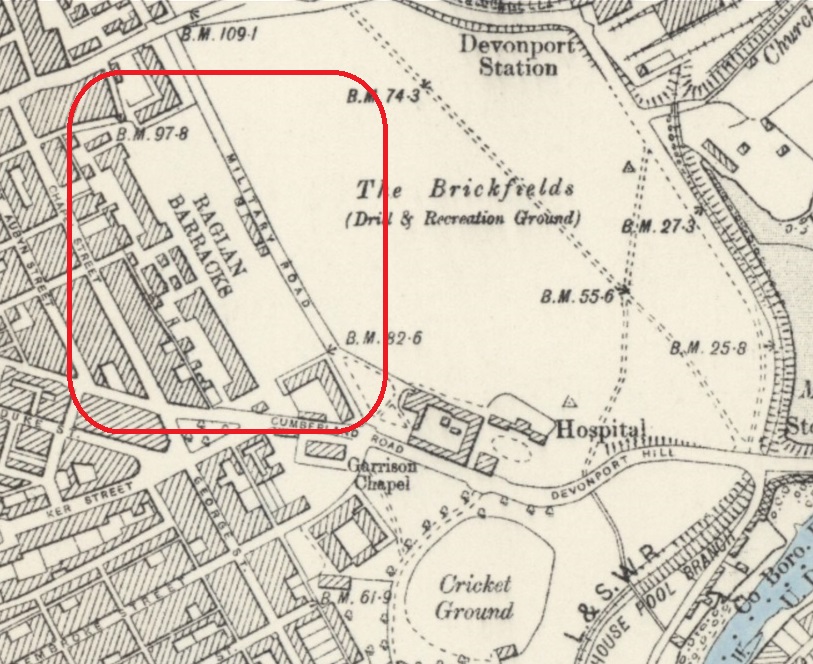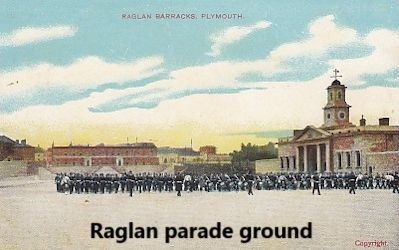


The normal venue for the event was Raglan Barracks, but when the barracks were unavailable, the sports were held at the Royal Marine Barracks in Stonehouse. This occurred in 1881 and 1886.
By 1884, Plymouth CC had organised a meet of Western counties cycling clubs, which was held over Whitsun along with the bicycle races. The clubs assembled on Plymouth Hoe and rode in procession to Raglan Barracks parade ground. The clubs represented were Plymouth CC, Devonport BC, Truro CC, Falmouth CC and Penzance "First and Last" BC. The races were one and three miles handicaps, five miles scratch and a tricycle handicap race. Falmouth CC won the bugle for the best muster of club members at the meet.
1885 the event had £120 in prizes and attracted top quality competitors such as EM Mayes of London, FW Brock of Cardiff and WA Illston of Birmingham as well as the local crack JW Barter from Plymouth. In the Challenge Cup race there was a dead heat between Illston and Mayes. A further race meeting was arranged on 19th August 1885 to decide the Challenge Cup, but unfortunately Illston was in America. The one mile race to decide the NCU local championship was won by Barter.
At the 1888 race meeting, the 50 guinea silver Challenge Cup became the property of EM Mayes of Surrey BC, after he won it for the third time, the race was described in the press as one of the greatest races ever seen in Plymouth.
A new 100 guineas silver cup was commissioned for 1889, it weighed 293 ounces and stood three feet high. The next Challenge race at Raglan was advertised as ‘the most valuable prize ever offered at a bicycle race'. The 1889 cup race was a close tussle between McRae, Illston and Mayes but Illston took the last corner too sharply and came off, leaving Mayes to go through and win.
After the Whit Monday race meetings had been held for many years at Raglan Barracks, the military authorities were unable to grant their use for 1892 and there was no further bicycle racing there. The Albion football club offered their ground at Bladderley and in 1892, bicycle and races moved there.
The Raglan Barracks were demolished in the 1970s, apart from the main gateway, which is Grade II listed and was converted into flats.
